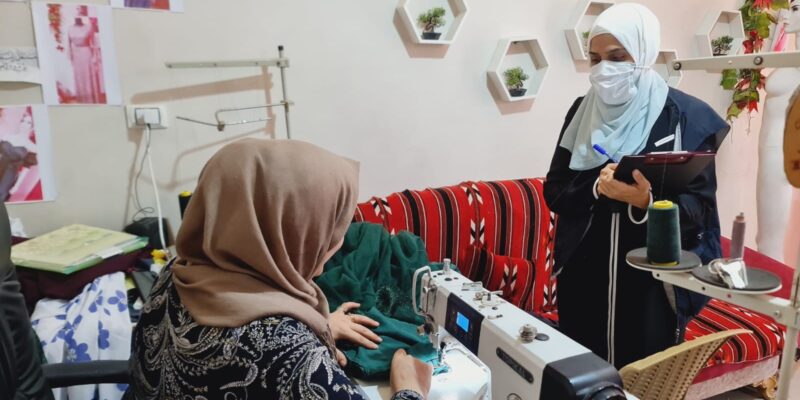POINT’s Early Recovery and Livelihoods (ERL) Strategy – Detailed Summary
POINT’s ERL Strategy is a context-driven, inclusive, and multi-level framework aimed at strengthening the resilience of crisis-affected communities by enhancing access to sustainable livelihoods and essential services. Developed from operational experience across Syria, Iraq, and Turkey, the strategy provides a roadmap for transitioning from humanitarian response to development.
POINT’s Early Recovery and Livelihoods (ERL) Strategy – Detailed Summary
POINT’s ERL Strategy is a context-driven, inclusive, and multi-level framework aimed at strengthening the resilience of crisis-affected communities by enhancing access to sustainable livelihoods and essential services. Developed from operational experience across Syria, Iraq, and Turkey, the strategy provides a roadmap for transitioning from humanitarian response to development.
Strategic Vision
“Empower local communities to strengthen their resilience through enhanced access to inclusive, diversified and sustainable livelihoods opportunities and essential services.”
This vision supports the transition from emergency aid to self-reliance, leveraging community capacities and local markets to sustain impact.
Strategic Objectives
- Enhance household income and reduce reliance on negative coping mechanisms.
- Strengthen MSMEs to promote local economic development.
- Rehabilitate essential infrastructure to facilitate access to services.
- Foster social cohesion through inclusive and participatory approaches.
Theory of Change
POINT’s Theory of Change integrates interventions across four interconnected levels:
- Individuals: Empowering vulnerable people—particularly women, youth, and people with disabilities—through vocational training, job placement, grants, and coaching.
- Businesses: Supporting MSMEs with technical and financial inputs to expand operations and employment.
- Markets: Strengthening local market systems through value chain development, infrastructure rehabilitation, and business linkages.
- Communities: Promoting inclusive governance and social stability via community engagement, awareness campaigns, and support for CBOs and local committees.
Each level reinforces the others, ensuring a sustainable ecosystem of resilience and growth.
Program Principles and Standards
- Market-Aware: Interventions aligned with local economies and the Minimum Economic Recovery Standards (MERS).
- Disability-Inclusive: Tailored support for full participation by people with disabilities.
- Resilience-Centered: Strengthening the ability to withstand and recover from shocks.
- Community-Driven: Engagement from design to exit to ensure relevance and sustainability.
- Gender-Sensitive: Promoting economic empowerment and equitable access for women and men.
Quality-Assured: Rigorous needs assessments, CFRM feedback, and continuous monitoring.
Strategic Pillars of Intervention
- Cash-for-Work (CFW): Short-term income opportunities linked to public infrastructure rehabilitation.
- Income-Generating Activities:
- TVET (Technical Vocational Education and Training)
- Employability Programs for youth and graduates
- Life Skills Development
- Business and Entrepreneurship Support: Capacity building, mentorship, and funding for MSMEs.
- Mini-Grants: Financial support embedded in livelihood and business interventions.
- Infrastructure Rehabilitation: Targeting markets, roads, schools, water systems, and economic hubs.
- Community Engagement: Formation of steering committees for oversight, accountability, and sustainability.
Innovative Approach: POINT Innovative Livelihood Modality (PILM)
PILM is POINT’s flagship model introduced in 2022, designed to bridge vocational training with real employment opportunities by partnering with private sector businesses.
Three-Phase Training Scheme
- Training Phase (Unskilled): One-month hands-on learning with transport allowance.
- Apprenticeship Phase (Semi-Skilled): One-month paid apprenticeship with real work exposure.
- Job Placement Phase (Skilled): Four-month employment, with POINT subsidizing wages.
PILM strengthens financial stability, minimizes dropouts, promotes gender and disability inclusion, and builds long-term employer-trainee relationships.
Target Population
The ERL strategy targets economically marginalized groups, including:
- Women
- Youth
- People with disabilities
- Elderly-headed households
- High-dependency households
- Internally Displaced Persons (IDPs) and returnees
These populations often lack access to resources, employment, and economic decision-making.
Key Strategic Outcomes
- Increased household economic resilience
- Thriving, sustainable MSMEs
- Improved access to essential services
- Strengthened social cohesion through inclusive programming
Learning and Evidence-Based Adaptation
POINT embeds learning across the ERL strategy to answer:
- What works in economic recovery and is scalable?
- How do individual and business support contribute to community stabilization?
- How to foster equitable, productive environments?
Learning is participatory, inclusive, and equity-focused, especially for marginalized women and people with disabilities.
Funding and Resource Mobilization Strategy
- Targeted donor engagement (institutional, private, foundations)
- Proposal development grounded in evidence and learning
- Showcasing results through strategic communications
- Scaling proven models like PILM for greater impact


